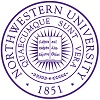专业详情
The Master of Landscape Architecture curriculum has four distinct interconnected sequences that are required of all students (except those who may be allowed to waive certain requirements because of previous experience or training). These are the Studio, Workshop, Theory, and Media sequences. The curriculum is designed so that these four sequences relate to one another horizontally and vertically throughout the entire degree.
At Penn, design is the primary focus of our teaching and research. By “design”, we mean three things: material practice (the physical making of things, places, environments; the experiential aspects of things made, including drawings and models); inquiring practice (the asking of questions, exploring of ideas, and speculating upon alternative sets of possibility); and process-based practice (the recognition that landscapes are formed and evolved by processes in time, and that creativity too is dependent upon the processes one works through to develop a project).
These studies of design occur in the studio, where hypothetical scenarios surrounding the development of real sites and programs are used to make projects. Such projects vary from the design of pathways through complex terrain, to gardens and parks, plazas and waterfronts, brownfield and derelict land reclamations, housing and mixed-use urban developments, and regional plans.
By way of sequencing exercises and studios, we work with five general steps: first is the development of visual and manual acuities – learning how to see and record, primarily through training in observation, drawing, and making things. Second is learning how to imagine and work with a variety of scalar and spatial configurations as well as temporal effects. Third is the development of approaches and techniques to respond to and enhance the specific qualities of particular sites. Fourth is the development of imaginative and speculative skills so as to envision plausible alternative futures that are critically informed by past and current ideas. And fifth learning how to intervene in and reorganize ecological and cultural systems in newly creative ways across a range of scales.


